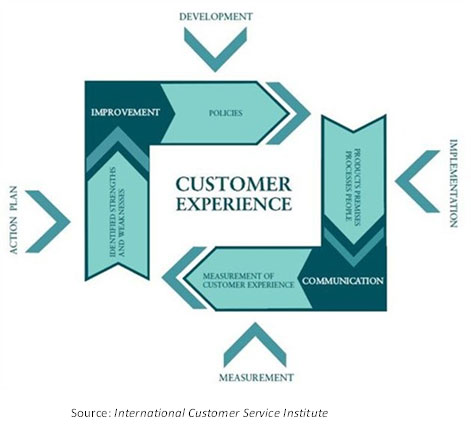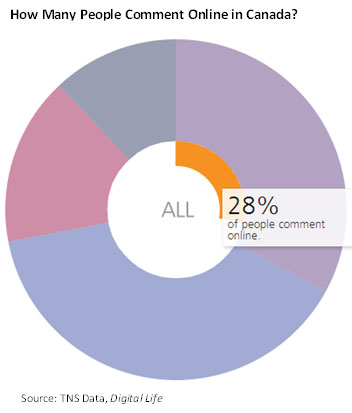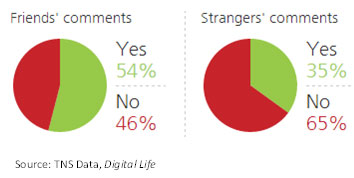Do You Care About Your Customers?
Then, do something about it, online.
Customer service is an everyday reality for all of us. Unless you’re living off the grid somewhere, chances are pretty good that you are having at least one interaction per day with a company or organization -that you are a customer of. Far from being an abstract concept, customer service is simply defined as a series of actions that an organization takes in order to serve the needs of its customers. When you look around the web for definitions of customer service, there is a lot of positive language about it; talking about good customer service, positive client interactions, etc. I prefer the neutral definition, because in my experience, there is good customer service, and there is bad customer service. Every single opportunity you have to interact with a customer is an opportunity to increase your brand sentiment or decrease it. Whether you believe it or not, sustaining and increasing brand sentiment will bring you real dollars. That means that online customer service has…wait for it…actual bottom-line value to a business.
Let’s start with a look at the mechanics of it. There is actually a standard for customer service, developed 25 or so years ago by The International Customer Service Institute (www.ticsi.org). Gotta be honest here, before writing this post, I had no idea this organization existed; but at the same time, I’m impressed by it. All of the things I’ve learned over my many years in customer-facing roles are reinforced by the language and sentiment of The International Standard for Service Excellence (TISSE 2012).

As you can see in the diagram, which is taken from TICSI, there is a cyclical model; including measurement, planning, development, and implementation. Woah! Now I’m really starting to connect with it because it’s starting to sound a lot like the way we at Bluetrain approach online marketing.
What’s the point here then? How is online customer service any different? Well, let’s think of every website as a separate instance of a service organization. I know it’s a bit preposterous, but that’s hundreds of billions of possible instances, creating many millions of interactions with “customers.”
So, let’s think about the web specifically. Of all things online, websites are the most discretely measurable. In our approach as online marketers, it’s all about those “web properties.” As much as we deal in extensible forms of online advertising and promotion, including Social Media Marketing, we’re obsessively trying to get our customers to think about their websites as properties. Yeah, it’s our organic bias – our SEO roots are inescapable (and we’re proud of them!), but the theory works – always drive equity into your properties. So, if I’m looking at Google Analytics, and I see a bunch of traffic in there, this is a coarse measurement of my online customer base. The metric of “unique visitors” represents that:

What’s the point here? How is online customer service any different? Well, let’s think of every website as a separate instance of a service organization. I know it’s a bit preposterous, but think about it. That’s hundreds of billions of possible instances, creating many millions of possible interactions with “customers.”
How Can I Service So Many Customers?
Even if I’m a big organization then, how can I possibly hope to give effective & efficient online customer service to 672,630 people? It’s mind-numbing. Even a rookie food or mommy blogger will have hundreds of visitors within the first few months of actively blogging. Can you picture even a percentage of those people in a lineup somewhere? There are some basics there; have a website with a good amount of relevant and easily-searchable content, have an established internal group of content authors, keeping the content fresh and relevant, and have plenty of calls to action (CTAs) allowing people to access the customer service organization (contact centre, etc). That is a pretty basic stuff for any enterprise organization and isn’t too hard for small-to-medium sized organizations to implement. As long as you give a s**t about your customers. Being basic or fundamental doesn’t mean it’s common. Even today, you’re basically rolling the dice when you fill out a contact form and submit it on a webpage. But ignorance of the basics….is another blog post (at least one!).
Let’s assume you’ve got the basics covered, what are the things you can do to get to next-level online customer service, or as a friend of mine calls it – 3.0. The first thing you need to do is to try and aggregate what customers are saying about you online. This is called Social Media Monitoring. Anyone in our kind of work is familiar with the concept (which is just what it says – monitoring what’s said in social media. If you just want to take a look at this stuff, there are many tools you can use. Hootsuite is one of them, and is maybe the most popular with our community – there is a free version of it, which is kind of cool to play with. If you’re an organization that is serious about customer service though, meaning you lose sleep when you know even one of your customers is dissatisfied, using Social Media Monitoring can be like asking a question that you don’t want an answer to. If you have a strong brand on some level, I can almost guarantee that you’re going to find someone out there who says “you suck.” It’s an unsettling consequence, especially for someone who’s really close to their customers, like an entrepreneur in a small business. It’s the kind of stuff that will wreck your day.
Hootsuite is one of them, and is maybe the most popular with our community – there is a free version of it, which is kind of cool to play with. If you’re an organization that is serious about customer service though, meaning you lose sleep when you know even one of your customers is dissatisfied, using Social Media Monitoring can be like asking a question that you don’t want an answer to. If you have a strong brand on some level, I can almost guarantee that you’re going to find someone out there who says “you suck.” It’s an unsettling consequence, especially for someone who’s really close to their customers, like an entrepreneur in a small business. It’s the kind of stuff that will wreck your day.
Don’t lose hope, though, if you can get through things, and suck up your feelings of anger and disappointment, you should realize that every challenge is an opportunity. This is no truer than it is with Social Customer Care. Customers will go through all kinds of emotions when dealing with you. A long-held belief of mine relates to this philosophy – everyone is smiling and happy when the money’s changing hands (the happy customer buys your product, or engages your organization in some meaningful way), but the biggest differences to be made come around when the sh*t hits the fan. That’s when you know if the organization you deal with is worth its salt. That is the moment of truth for your customer service relationship. That is your opportunity to solidify the brand loyalty that all organizations want so badly. YOU. SUCK. Phew. It makes me a little anxious just to write it because I know the feeling – someone thinks you’re awful, that you don’t care, and those things couldn’t be further from the truth. You DO care.
You work hard to try and deliver the best-most value possible. So why isn’t Hootsuite or some other social media monitoring tool working for you? Well, not actually that hard to figure out, and like so many things in life, it’s encapsulated by this phrase: it’s not what you have, it’s what you make of it. So, in the context of Social Customer Service (or Social Customer Care as our partner Brand Embassy would call it), knowing what your customer is saying about you isn’t enough. Doing something about it, that’s the sign of a truly evolved customer service organization. There are even different levels to that, but let’s not go there. For heaven’s sake, I’m already over 1,200 words!
I recently made a presentation at Edmonton Online Marketing Meetup. The subject was around Social Customer Care and its impact on search (SEO). The idea was really based on the idea of the phrase “(company name) sucks.” This is what people are reasonably likely to search for if they’re trying to figure out whether or not you’ve got any chops as a customer service organization.
My presentation told the story of a negative customer service experience, and relating the actions taken by the community managers for the Facebook page in question, and also by the organization itself. Beautifully enough, the customer in question not only re-posted about her concerns being dealt with fairly, but she also indicated that she had already ordered again. So, to try and quantify and put some ROI-thinking into it, her problem and the successful resolution of it resulted in:
- All of her Facebook friends being exposed to the story (the average Canadian has 130 Facebook friends)
- The 47,000+ fans of the Facebook page are exposed to the story as well
- This content couldn’t be more genuine
- It’s all searchable online as well (even more people)
Whose Comments Do You Believe Online?
Source: TNS Data, Digital Life
Social Customer Service can be very much like earned media in the advertising world. When you make your customers whole online, it’s not likely to “go viral,” but at the same time, every instance of it will be recorded and shared for all to see, and will generate content that Google will index so that people who search for your problems and challenges, will start to get ideas about how you deal with them as well. This is turning challenges into opportunity, and extending beyond the realm of customer retention, and into the sweet space of customer acquisition.
I’ve long been user of tools like Hootsuite, so when I first saw this new product, I was naturally skeptical. The tipping point for me is all about the internal workflow of the tool. It’s not enough to just collect and aggregate social mentions of a brand, but in keeping with the thesis of this post – doing something about it is what can make an actual impact on your brand sentiment.
So, caring on its own is not enough. What are you going to DO about it?
Written by Diana Gaviria
